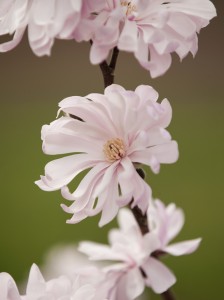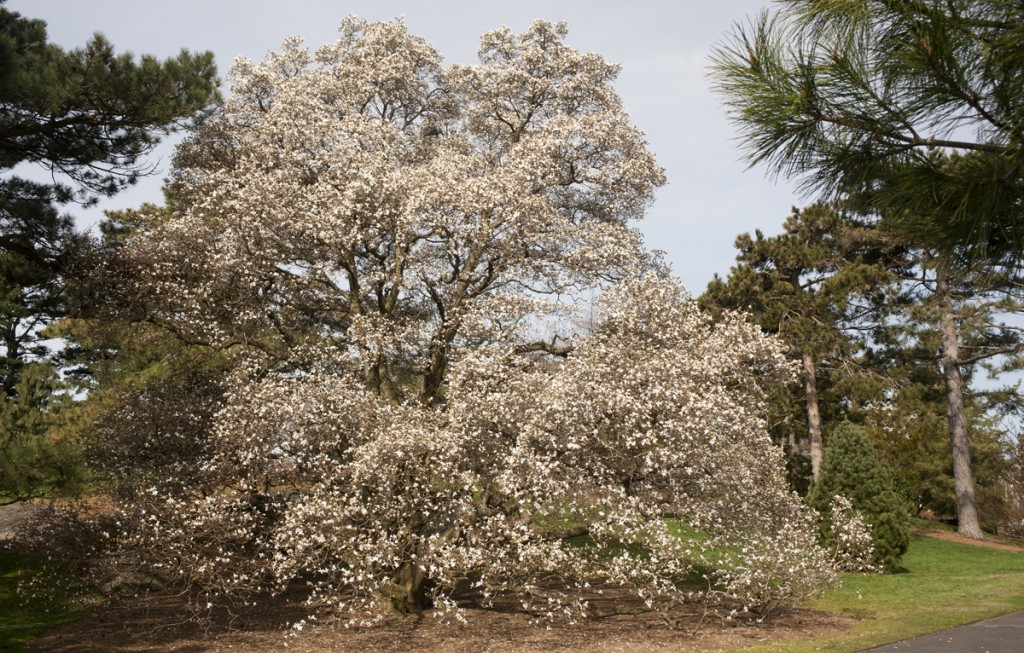Marvelous Magnolias
Posted in Horticulture on April 18 2014, by Jaime Morin
Jaime Morin is The New York Botanical Garden’s Assistant Curator in horticulture. She works with the plant records and curation teams to help keep the garden’s information on its living collections up to date. She also oversees the details of the garden’s Living Collections Phenology Project.

Late last week I brought a group of new Living Collections Phenology volunteers through the magnolia and oak collections just as the plants began hinting at spring. Of the earliest flowering species, the star magnolias (Magnolia stellata) were beginning to show off their crisp white flowers and the rarer Zen’s magnolia (Magnolia zenii) was in full flower, showing gorgeous pink watercolor streaks at the base of its tepals.
This week the magnolias are really strutting their stuff at The New York Botanical Garden. It is amazing how much things can change over the weekend! By this Monday the many saucer magnolias (Magnolia × soulangeana) in the collection were revealing their newly opened flowers and they continue to get prettier by the day.
Though you can’t go wrong with any of the magnolias here at the Garden, my favorite plant is one of the kobus magnolias (Magnolia kobus). We have a fantastic specimen just north of the Visitor Center that I believe is unparalleled across our 250 acres. This particular plant, accessioned in 1940, is over 35 feet tall and 45 feet wide. Its fragrant white flowers cover its branches like thousands of small white song birds about to take flight.
I don’t just adore magnolias for their flowers, though. Even if you miss this initial show, their fruit is also fascinating. Magnolias create lumpy, club-like aggregate pods that eventually open to reveal fatty, brightly-colored seed structures that attract a variety of songbirds and plant lovers alike.

For the home gardener, most magnolias flower best if given full sun or light shade. They also tend to enjoy somewhere sheltered from harsh wind and appreciate moist, well-drained, slightly acidic soil. There are many different species and cultivars to choose from, so be sure to do some research before planting one at home. They can vary greatly in size, color, and form. Some are evergreen, some lose their leaves during winter, and some (like Magnolia virginiana) can waffle in between the two depending on the winter!
If you are a magnolia admirer, be sure to explore the old magnolia collection near Twin Lakes, as well as the many wonderful specimens we have dotted across the landscape.

